The First Jet Pilots
First-hand accounts from the pilots who brought us into the jet age—sometimes the hard way.
/https://tf-cmsv2-smithsonianmag-media.s3.amazonaws.com/filer/b9/00/b9007975-1b59-472c-ad47-fdb7b55a05c3/07a_aug2018_lylejansmame262-p52-e50g5599_live.jpg)
Pilots who fought in the last years of World War II were flying airplanes refined by years of combat experience and engineering, the most advanced piston-engine aircraft ever built. Post-war, they were subjected to something entirely new: jet-powered fighters. The basics of flying were the same, but the propulsion was revolutionary. Few two-seat trainers existed. “Besides, since you’re all experienced fighter pilots,” one squadron leader told his cadre of jet aviation novices, “you don’t need any dual instruction before flying jets.” But the transition from propeller-driven airplanes was daunting—23 military jets crashed between 1945 and 1950, killing 36 (including victims on the ground). Among the dead was the highest-scoring U.S. ace of the war, Richard Bong, killed during a Lockheed P-80 Shooting Star test flight. The following accounts of early jet experiences come from veteran aviators who entered the Jet Age the hard way.
Roy W. Brown Jr.
I flew 84 P-47 combat missions. I engaged German fighters just once, late in the war not far from the Rhine [river]. My wingman saw Fw 190s flying in the opposite direction. I got on the tail of one. The P-47 was not as maneuverable as the 190, but the 190 had a flaw. In a real sharp turn to the left, it would stall. I found out I could turn inside him. I got strikes and he eventually bailed out.
On V-E Day [Victory in Europe, May 8, 1945], I was told the Air Force wanted to talk to a couple of pilots from our group. In my case, they came to me and asked what I knew about jet engines. I told them I didn’t know much, but I was a chemical engineer. On June 3, I was flown to Lechfeld where they were working on Me 262s. There were quite a few German mechanics and two German test pilots; they were pro-American and spoke very good English. Not only had I never flown a jet, I’d never flown a twin-engine aircraft or one with tricycle landing gear. All of it was new to me.
The Me 262 was nice-looking, more streamlined than a P-47 and not as noisy. The controls—throttle, stick, and the rudder pedals-—were about the same as a P-47. Starting up was more complicated: You had to get the engine to 1,000 rpm or so before you could start feeding fuel.
On June 10, we flew nine planes to Melun, near Paris. We had gotten used to the controls and instruments, but my very first flight wasn’t until June 8, in a two-seat, dual-control version. Karl Baur, one of the German test pilots, sat in the back seat and took each of us up. Before we took off Baur said: “When you come in for a landing keep your speed. If you’re throttled back then need power, you can push the throttle forward, but you won’t get power until the engine rpms come back up.” That’s really all he said. So I took off, flew the traffic pattern, and landed. Eight minutes. I don’t think Baur touched the controls.
On the 10th, they lined up all nine planes. The weather was good, sunny and clear. Mine was number six. We took off one at a time at 20-minute intervals. That way, if one plane had a problem landing at Melun, they’d have time to clear it before the next plane came. The distance to Melun was 375 miles. Near ground level, the Me 262’s range was only about 300 miles, but I figured if I got up to about 10,000 feet and flew straight to Melun I’d have plenty of fuel. We had no radio but we had maps, and I’d been flying that area for four or five months, so I had no problem until I’d flown about halfway, [beyond familiar territory]. I didn’t see any landmarks but before I really worried about it, I saw the field ahead and to the left. I was the sixth to take off but the first to land. All the others made it safely. In July, we flew the aircraft to Cherbourg so they could be loaded onto an aircraft carrier for transport to the States.
I don’t remember any apprehension about flying the Me 262. It was just another flight we had to make. We just learned what we needed to. Just another assignment.
Lester R. “Bud” Smith
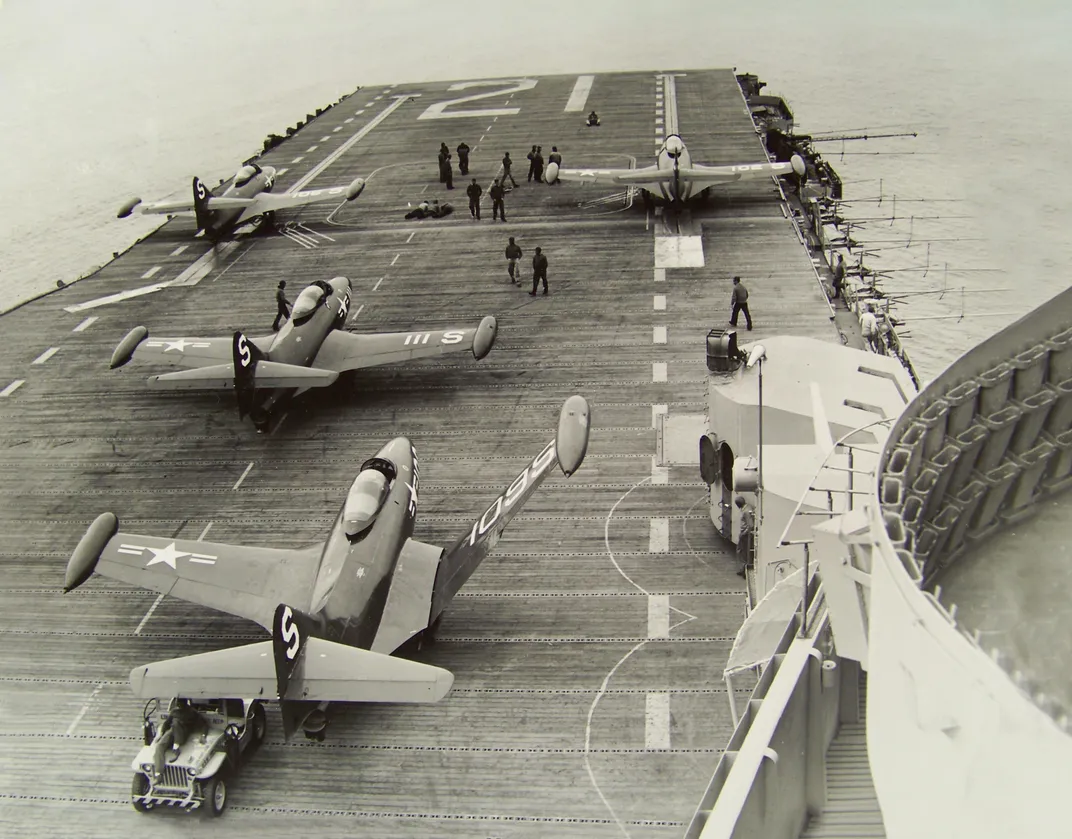
I was slated to go to Korea in the F4U. When I reported to [Naval Air Station] San Diego in September 1950, I was still a flying midshipman. They allowed me to check out in F6Fs, so I was alternating flying F6Fs and F4Us. We younger pilots used to do “combat.” I never did lose a “battle.” The F4U can’t stay with the F6F in a turning circle so when I flew in the F4U, I made the battle go vertical. An F6F just can’t accelerate with an F4U.
When the Essex air group came back from Korea we were supposed to fill in for people being transferred out. I was told I was going to be in VF-53, an F4U squadron. But when they cut the orders, I was ordered to VF-52, a jet squadron. I thought there was a typo, but I wasn’t going to tell anybody. At that time, they were flying F9F-3s.
Lockheed will tell you that nine out of 10 jet pilots are trained in Lockheed jets—the T-33. That’s true, but I’m one of those one out of 10; my first [jet] flight was in an F9F-3 on the 18th of December, 1950, just a couple weeks after I joined the squadron. There were four of us with an experienced flight leader. They told us it would be slow getting in the air. Don’t pull the stick back until you got to 105 mph. I had gone 4,000 feet down the runway, about halfway, and I hadn’t even cracked 40 mph. I figured the airplane was going to go off the runway into the bay, and they were going to fish me out. Suddenly, the airspeed indicator started to move visibly: 105, 110, 125. The airplane started to lift off at about 140 and I was airborne.
The flight leader put us in echelon formation at 20,000 feet. He would peel off and you would follow him after 20-second intervals. Then he would turn 180 [degrees] and you would rejoin him—or try to. In an F4U, you can have 40 knots on the leader, go sliding in there fast, pull the power back, and that big prop becomes a brake, slows you down on the spot. The first time I did that in the Panther, though, I came sliding in there smartly, pulled the power back to idle—and I went by him like a rocket. You have to think way ahead of the jet.
Landing was good because of the visibility from a tricycle landing gear airplane: You could see down the end of the nose. But that first field landing—when I put it close to the runway and held the nose off to slow down, the doggone airplane didn’t slow. It kept rolling like it’s going to roll forever. I’d say I used three-quarters of the runway that first time.
The bad thing about the F9F-3 was its Allison engine. It was not very reliable. I had 136 carrier combat missions in Korea, all in F9F-2s [a later and better version, despite the number] and, boy, I bless myself.
Clarence E. “Bud” Anderson
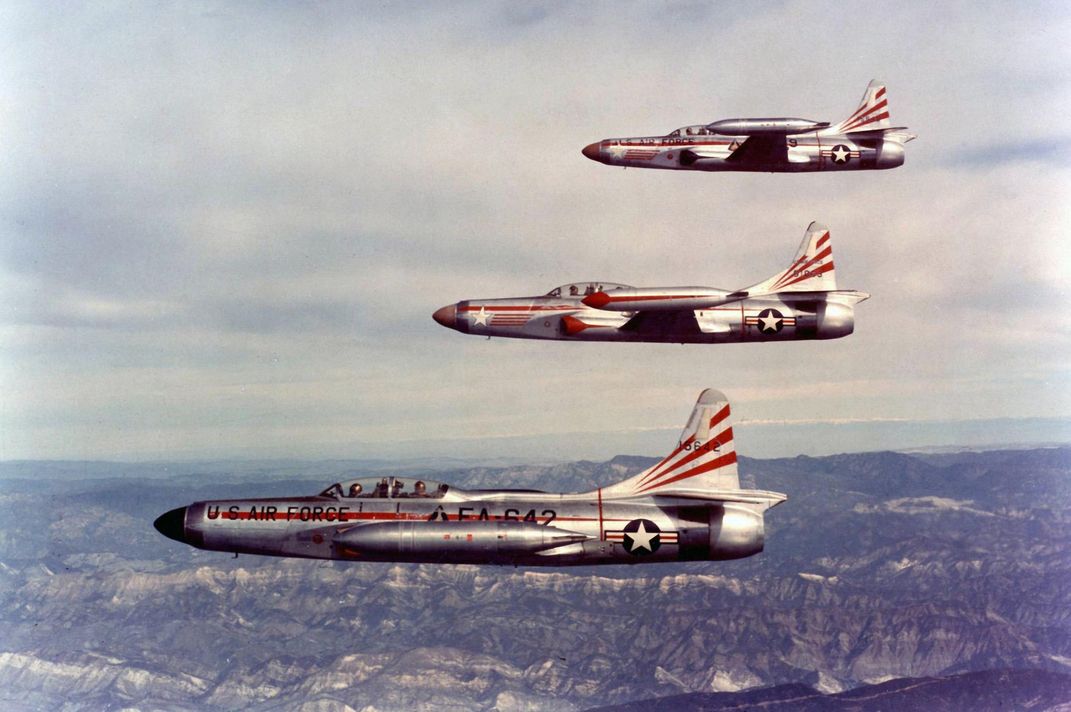
I thought the P-39 was great until I flew the P-51. We didn’t have P-51 pilot manuals, but we were so happy to get them we didn’t care. Still is my favorite aircraft: looked good, flew good, made a great sound. Long range but still quite maneuverable. I went into combat in February ’44. I flew 116 missions and got 16 kills: eight Bf 109s, eight Fw 190s, and one-fourth of a Heinkel 111.
I ended up being at [Dayton, Ohio’s] Wright Field in 1947 or 1948, but I had to go to Alaska first. Took a P-82 Twin Mustang up there and tested it in the cold weather. Beautiful country but a lousy airplane. In April 1950, we got our first F-94B—a stripped-down version with no controls in the back. Before my first flight I just got in and familiarized myself. You have the same basic flight controls. Someone stood on the wing, leaning over my shoulder, explaining the controls. The pilot who was to take it up next leaned over my other shoulder listening in.
Meanwhile, my boss Dick Johnson—a big practical joker—snuck in the back where the radar operator would fly. A huge panel of data-gathering instruments separated the two compartments so I couldn’t see him. After the briefing I fired it up, lowered the canopy, taxied out, and took off. Unlike in the Mustang, for takeoff you didn’t have to hold a bunch of rudder to offset the torque. Jets went straight down the middle, though the earlier ones took a little bit longer to roll. Tricycle gear also made it easier. You were looking down the runway right away. The engines were the big thing. The early engines were not as reliable as the good old Merlins. But as far as flying, you didn’t have to worry about big trim changes. Did I notice the speed difference? Oh, God, yes!
My house was right off the end of the runway, so whenever I took off, I always banked off over there to inspect my investment.
Suddenly: “I’m on your ass! You’ve got 10 seconds to get me off!”
I slammed my stick sideways. React first, figure it out later. I though it was some jerk jumping me on takeoff, sucking me into a dogfight. I’m trying to shake him, deceive him, you know, even though it’s a test flight. Pretty soon, Dick couldn’t help it—he laughed. I’d been had, but I think Dick had second thoughts. When we landed, he crawled out sweaty, his oxygen mask askew.
Kenneth O. Chilstrom
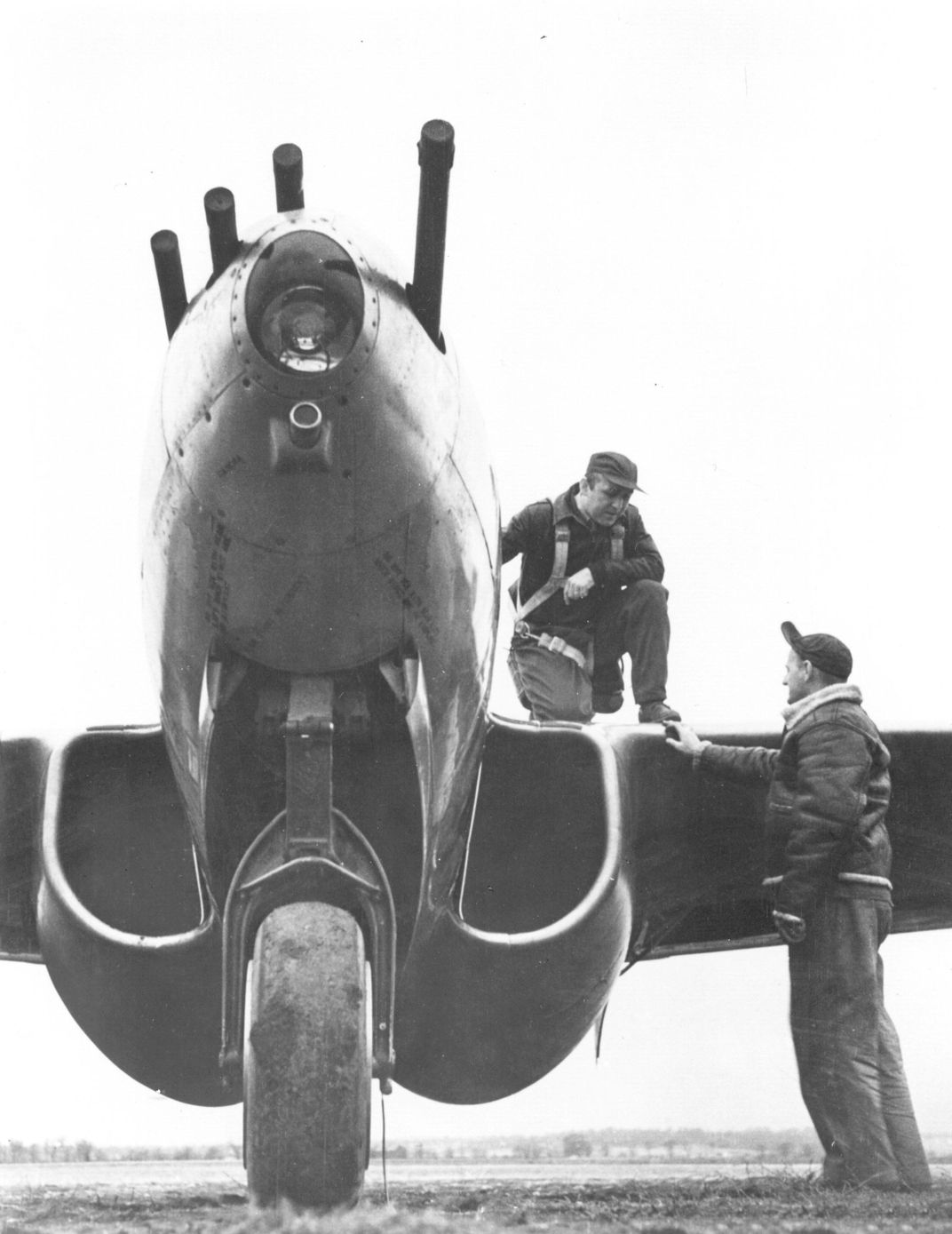
I flew the P-40N model. We put 75 new aircraft on board the USS Ranger at Norfolk. About 100 miles from Casablanca, they launched us. I was number 35, right in the middle of the pack. The propeller torque got each one, and they drifted off to the left. Down near the water, they got additional ground effect lift, so we all made it. I transitioned to the A-36, an early P-51 model with dive brakes. It was easier to handle than the P-40 but had a single-stage blower so we didn’t fly much above 12,000 feet. Quite lethal against trains, trucks, anything that moved. I had 80 missions over Sicily and Italy and came home in November 1943.
My next assignment was Wright Field—first in maintenance, but after six months, I transferred to test operations. The first jet I flew was the Bell P-59. We were given briefings by the contractors. Most airplanes follow the same pattern as far as the cockpit and controls. A jet is just different propulsion.
I ended up being the project guy on the -59 and in February 1945, had the first major jet accident in a U.S. military airplane. We had two P-59s at Wright Field and one was supposed to go to [the National Advisory Committee for Aeronautics] at Langley Field [in Virginia]. The weather was marginal the morning I was going to deliver the airplane, [but] the weather changed. So I took off in the P-59 and climbed to 20,000 [feet], intending to refuel at Roanoke before going on to Langley. But the weather was unsatisfactory for a VFR landing at Roanoke, and I didn’t have the electronics for an instrument landing.
I turned towards Greensboro [North Carolina]—my alternate—but halfway there, one engine stopped for lack of fuel. Near Reidsville, I saw a little 3,000-foot airstrip. I landed, got refueled, and made plans to take off in the morning for Langley.
On takeoff, I got about halfway down the runway, and I lost thrust. I didn’t have enough runway to put it back on the ground, so I went into the trees. The airplane was completely torn apart. The nose, the tail, all the right wing, and half the left wing came off. What saved me was the fact that the two engines gave structure to the cockpit. When I stepped out, the airplane was on fire. Fortunately, kerosene doesn’t burn like gasoline. I was wearing a Notre Dame-style football helmet. I had a bump on my forehead from hitting the stick, but that was all. I called Wright Field and they sent a converted P-38 two-seater to pick me up. Next day I was back at Wright Field.
Donald Q. Griffith
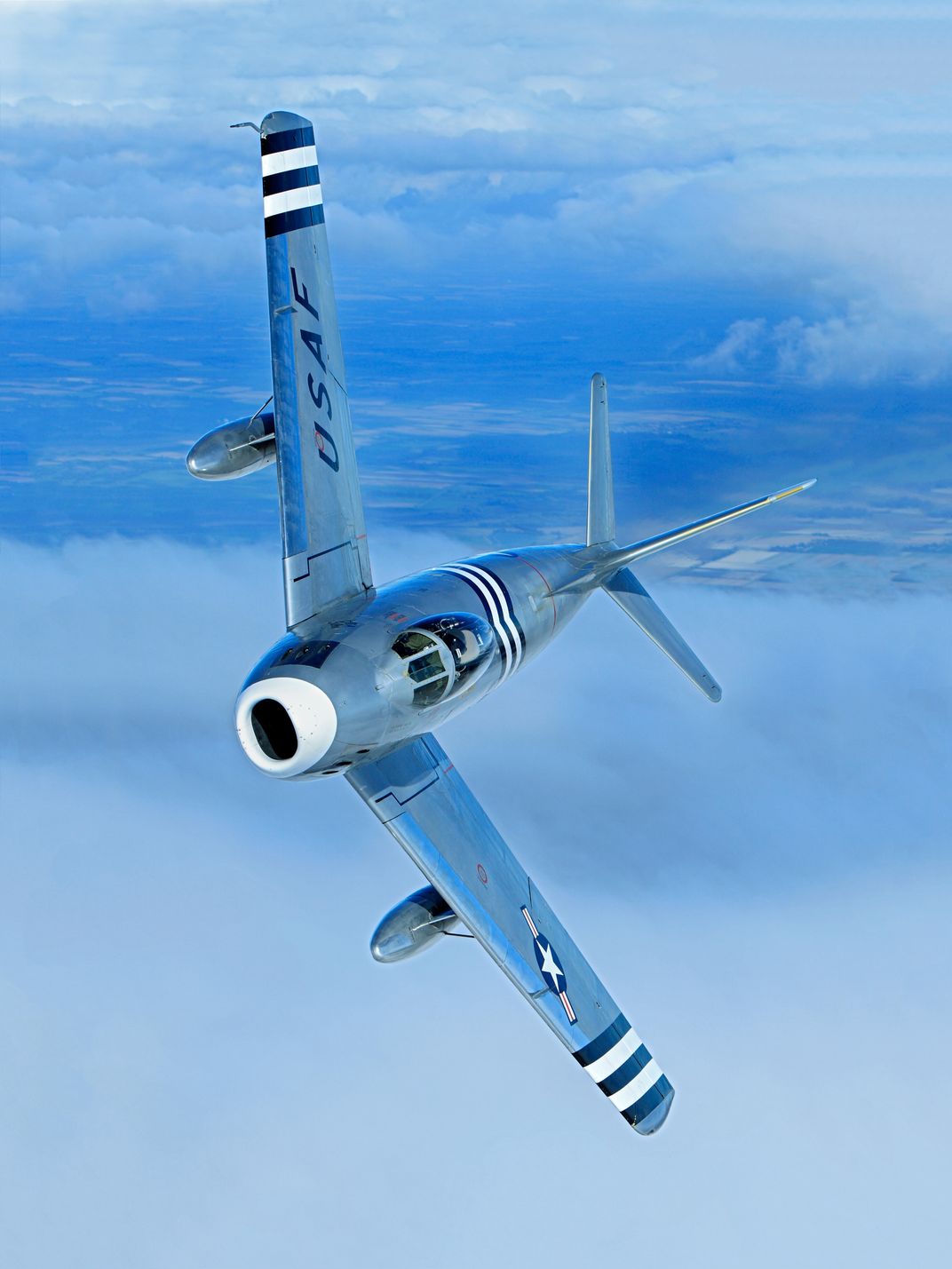
I got my wings in ’44. I transitioned into the P-40 and then the P-51. The P-40 was big, and the P-51 was much smaller and faster. We got combat-ready in a P-51, and we were ready to ship to Europe but the war ended. I went to college, flew P-51s on the weekend, and had a really good time. I graduated, started work, got married, had a boy, and then found myself called back to active duty in 1951.
We were changing to jets by now—the F-84C Thunderjet—but we had no two-place airplanes. They just put us in the cockpit. We started the engine, they said good luck, and away we went. The Mustang and Thunderjet have different gauges, switches, and procedures, but [familiarization] is all done on the ramp while you’re studying the cockpit. Once you get in the air, flying them is not that much different. The only real transition was takeoff and landing: using rudder for the Mustang, needing more runway for the Thunderjet. The F-84 probably had less vibration than a P-51, but it was not a quiet aircraft. It was underpowered and relatively slow. Also, a lot heavier; it’s built to carry bombs. The -51 was built for shooting guns.
When we got orders to go to Korea, three of us got assigned to the F-86s while the rest of the guys went F-84. Transitioning to the F-86—that was no problem. I got to Korea in June 1951, 4th Fighter Group, 335th Fighter Squadron. I flew 68 combat missions. Shooting was easier because you didn’t have to put in rudder all the time to fight the prop torque. The F-86 was the best airplane in the world.
George G. Loving Jr.
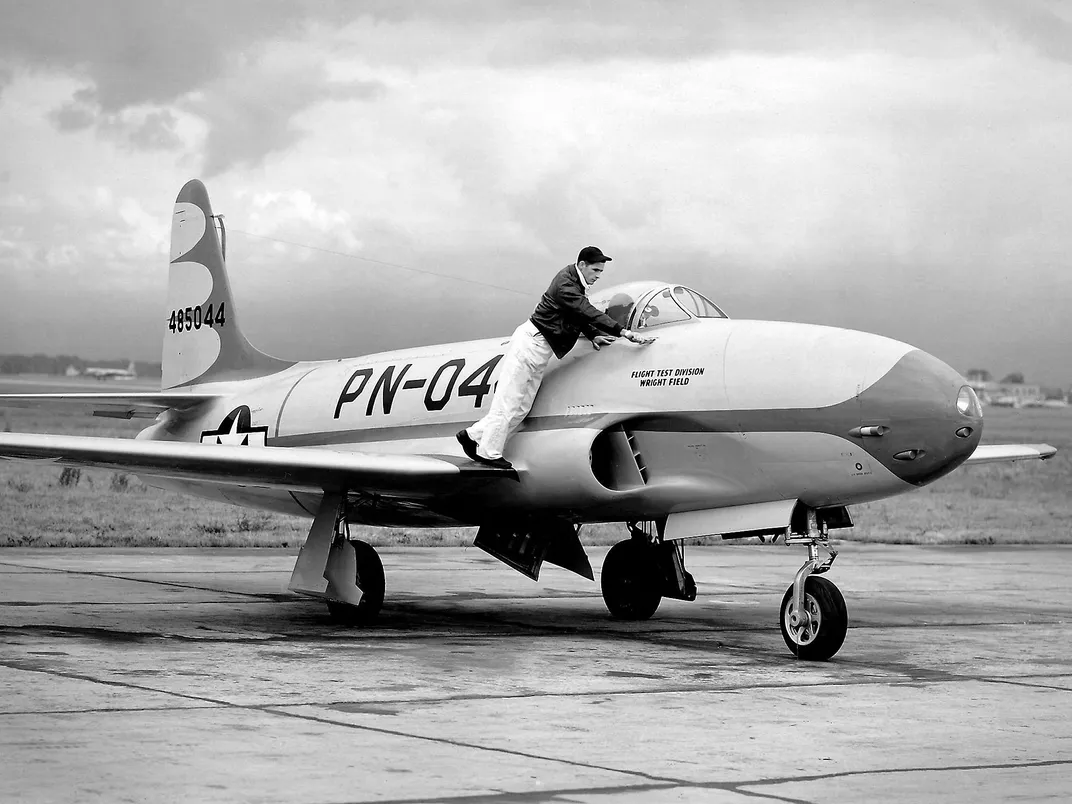
I joined the 31st Fighter Group in Italy in October 1943, and flew 101 combat missions in Spitfires Mark V and Mark IX—probably the best fighter aircraft in the world but didn’t have enough range. I had been in the outfit five months when we got P-51 Mustangs. The P-51 was the one that had the range. It ended up being the best fighter airplane at the end of the war. I flew 50 more missions in a P-51 and shot down five enemy aircraft. My post-combat flying assignment was as a P-47 instructor.
I was at Langley when North Korea invaded South Korea. Far East Air Force requested Mustang pilots, so I volunteered. The available airfields in Korea had short, unimproved runways, so there was an urgent need for Mustangs. I flew a half-dozen close air support missions from Taegu, Korea before I got sidetracked into flight operations.
Then my group commander asked me if I wanted to get into jets. I said yes, so he assigned me to the 49th Fighter Group, 9th Squadron. The squadron operations officer handed me a copy of the F-80 operating instructions. “You know the drill,” he said. I studied the instructions for a day and passed a 50-question written examination. Then I spent time in the cockpit and took a blindfold test. Bud Evans, an old hand in the squadron, called out the names of controls, gauges, switches, and levers; I pointed to the location or touched it.
They didn’t have a two-seater to check out with. I flew an F-80C with Bud tagging along. I made some turns and stalls, a couple of chandelles and barrel rolls, a high-speed dive, and a high-G recovery. I was an experienced fighter pilot and I knew the ropes. The F-80 was a wonderful airplane: very stable, forgiving, no bad habits, very versatile. It was very easy to fly. So I got 10 hours, and then I started flying combat. For the rest of the war, I flew the F-80 [on] 113 missions.
My first combat mission in the F-80 wasn’t very exciting. We rocketed a building which supposedly contained a lot of enemy troops. Later I did all sorts of things: dive-bombed airfields, did dawn searches for locomotives, put bombs in tunnel entrances, did rescue missions—everything you could think of. My most memorable F-80 flight I think was the May 1951 raid on Sinuiju airfield right across the Yalu River from the Antung MiG base. I led 42 F-80s in an attack on Sinuiju’s anti-aircraft emplacements. Several hundred airplanes were involved. We wiped it out.
Edward B. “Buzz” Purcell Jr.
I got my wings in December of 1945, but they let us out of the Navy so I returned to college. I was called up for Korea in ’52, went to Moffett Field, and joined VF-152, an F4U squadron. It was really a thrill to fly that plane. I flew 25 combat missions in an F4U.
When we got back from Korea, our squadron received the F2H-3 Banshee. The squadron commander told us we were experienced fighter pilots; we didn’t need any more special training. We got the Banshee handbook and studied that for a couple weeks. We had to know all the emergency procedures and pass a blindfold cockpit checkout. Within a month, we started flying. On my first hop, I did everything according to the way they told us: Try a few stalls but be sure you’re at about 20,000 feet. On your first landing, don’t come to a full stop. Take off again, come around, shoot three or four landings. The Banshee did not accelerate like the propeller plane, but it certainly went much faster and it was much quieter. I was humming along, not sure the engine’s running. But I’m climbing at 450 knots. Once I came to a stop, I was so happy to be alive I taxied in and went to the O-club and had a drink.
The carrier approach in a Banshee was much easier because your visibility was so good sitting up there in the nose. You don’t have anything blocking out the landing signal officer [who, from the deck, corrects pilots’ approaches]. The only thing is your speed; you’re doing everything much faster.
Trapping in a jet is different. In a jet, once the nose goes down, it’s not coming back up. That was a problem for anybody going props to jets. You’re sinking, and the only thing you do is maintain your sink rate. We bent a lot of struts.
/https://tf-cmsv2-smithsonianmag-media.s3.amazonaws.com/accounts/headshot/David31_copy.jpg)
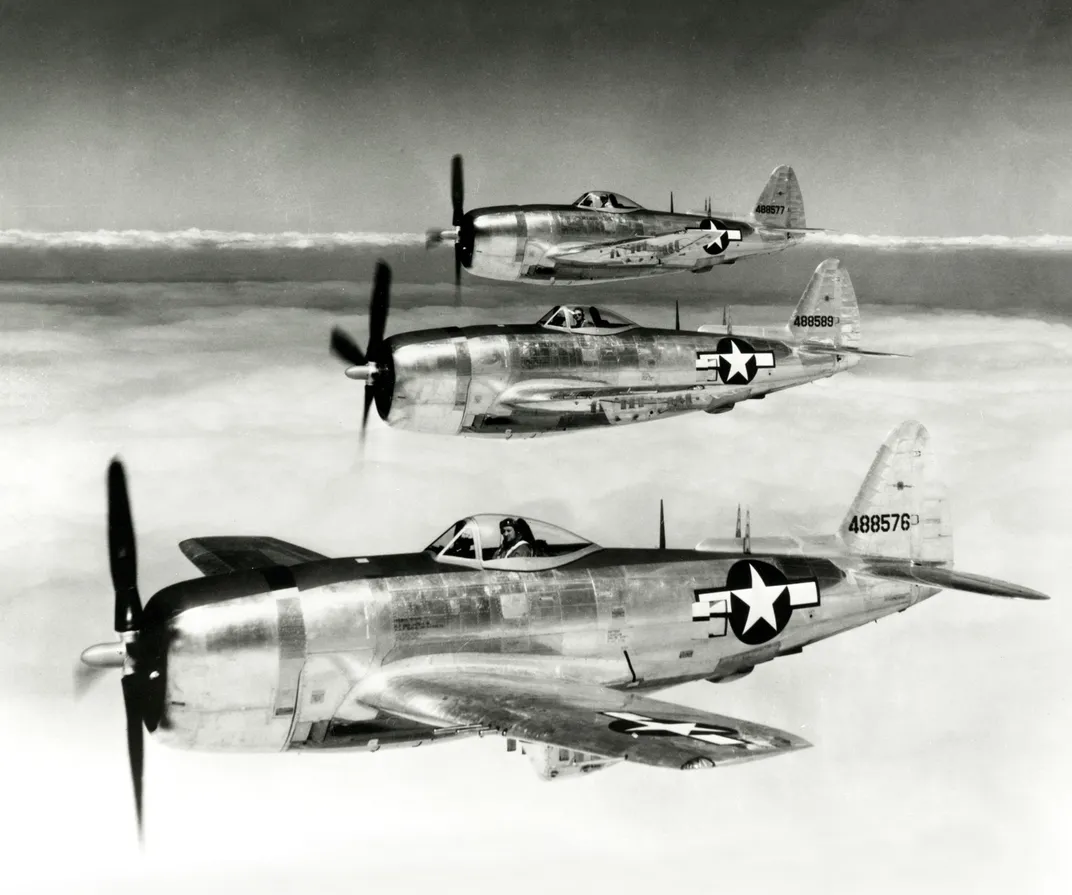
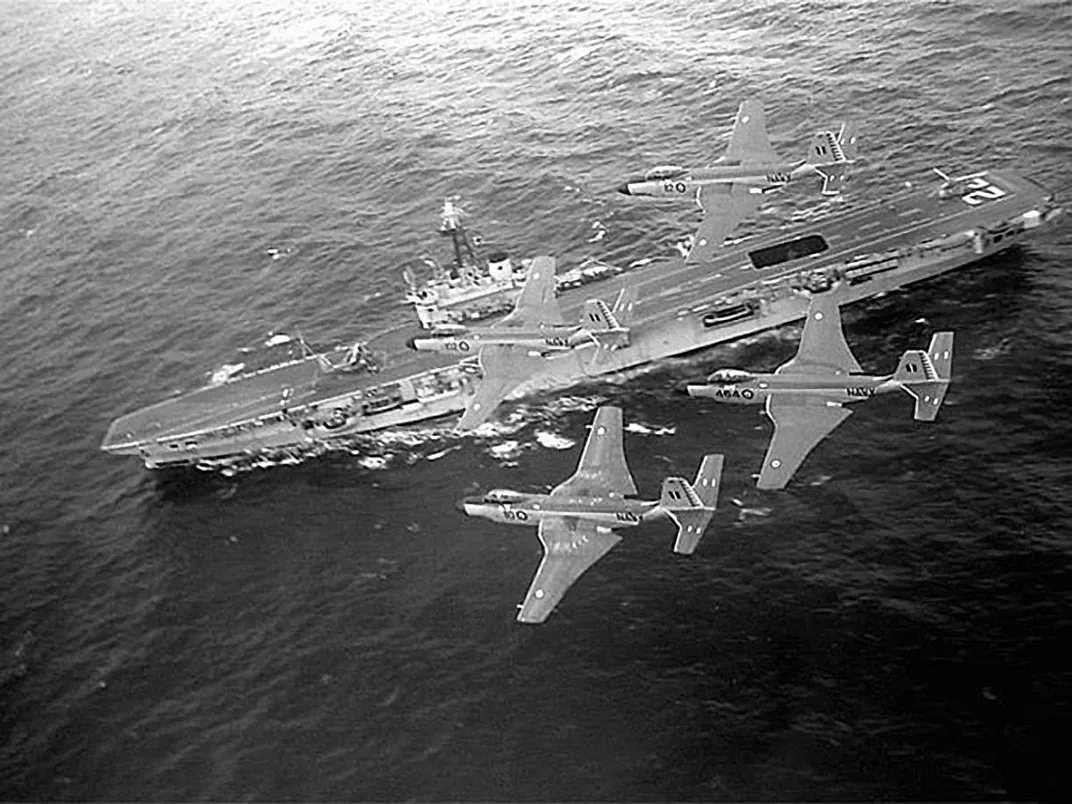
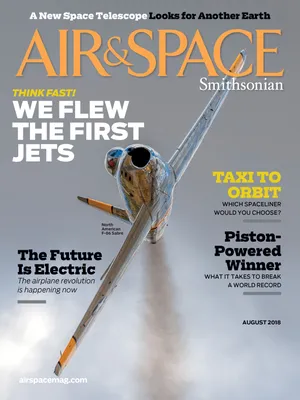
/https://tf-cmsv2-smithsonianmag-media.s3.amazonaws.com/accounts/headshot/David31_copy.jpg)